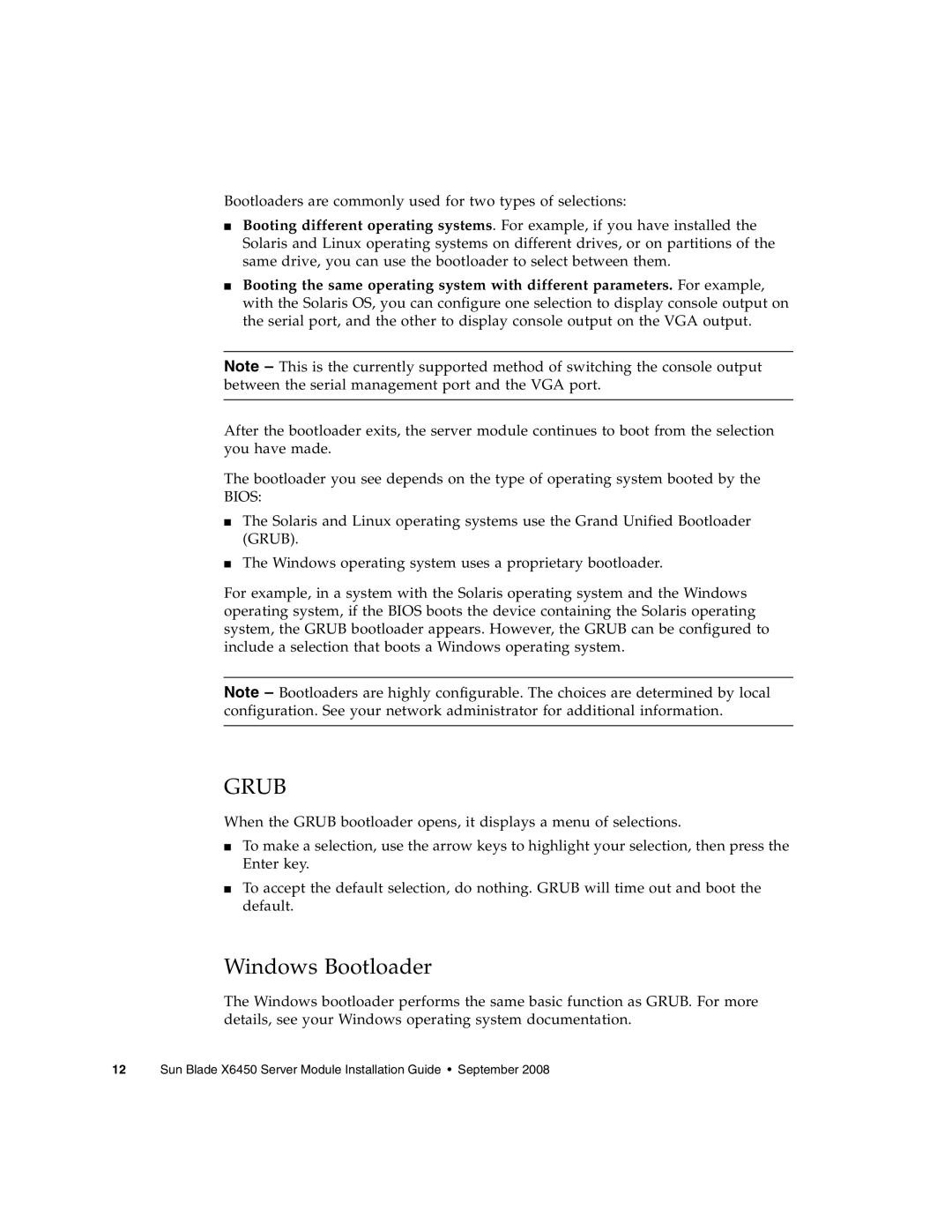
Bootloaders are commonly used for two types of selections:
■Booting different operating systems. For example, if you have installed the Solaris and Linux operating systems on different drives, or on partitions of the same drive, you can use the bootloader to select between them.
■Booting the same operating system with different parameters. For example, with the Solaris OS, you can configure one selection to display console output on the serial port, and the other to display console output on the VGA output.
Note – This is the currently supported method of switching the console output between the serial management port and the VGA port.
After the bootloader exits, the server module continues to boot from the selection you have made.
The bootloader you see depends on the type of operating system booted by the BIOS:
■The Solaris and Linux operating systems use the Grand Unified Bootloader (GRUB).
■The Windows operating system uses a proprietary bootloader.
For example, in a system with the Solaris operating system and the Windows operating system, if the BIOS boots the device containing the Solaris operating system, the GRUB bootloader appears. However, the GRUB can be configured to include a selection that boots a Windows operating system.
Note – Bootloaders are highly configurable. The choices are determined by local configuration. See your network administrator for additional information.
GRUB
When the GRUB bootloader opens, it displays a menu of selections.
■To make a selection, use the arrow keys to highlight your selection, then press the Enter key.
■To accept the default selection, do nothing. GRUB will time out and boot the default.
Windows Bootloader
The Windows bootloader performs the same basic function as GRUB. For more details, see your Windows operating system documentation.
12 Sun Blade X6450 Server Module Installation Guide • September 2008
